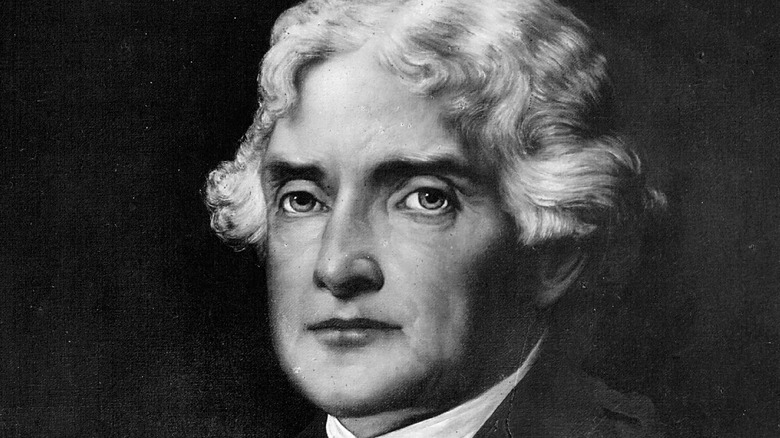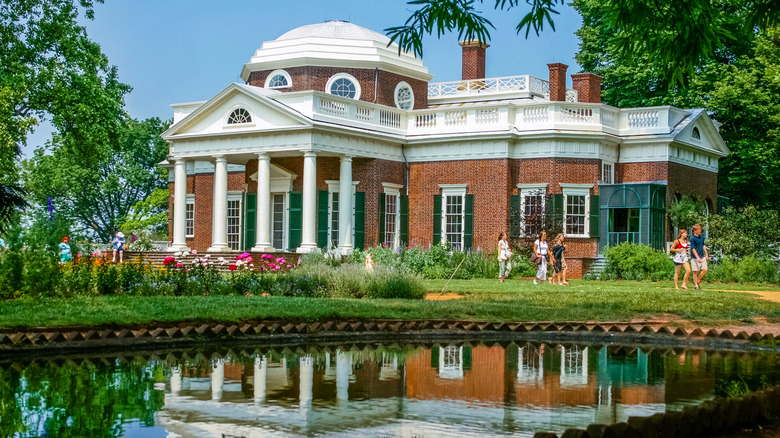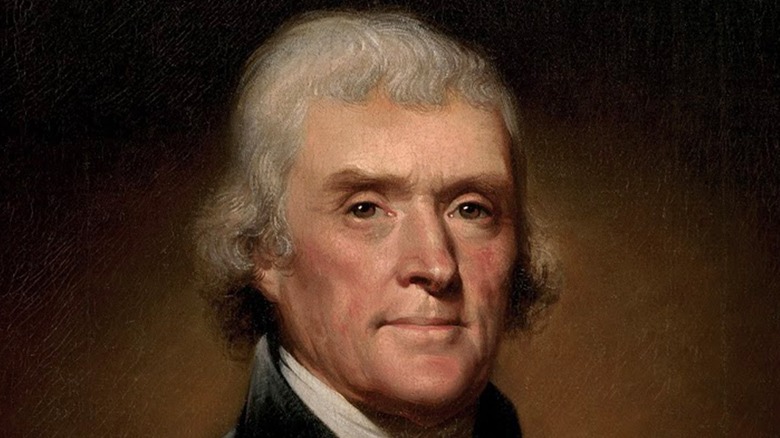What It Was Like Being One Of Thomas Jefferson's Slaves
In 1776 Thomas Jefferson created the first draft of the Declaration of Independence, in which he stated (via Library of Congress) that "all men are created equal." The sentence had different interpretations through the decades to come. Although people often believe it was about individual rights, the sentence probably refers to American colonists and the desire to live in a free nation (via Stanford). It's true that Jefferson had advocated against slavery during his life, but it is unlikely that he was talking about slaves when he wrote that sentence.
Jefferson believed that slaves were inferior, and that white and Black people could never live in peace, History reported. In his book "Notes on the State of Virginia," Jefferson wrote that slavery would be a ruin for both sides. After emancipation, the slaves should be brought back to Africa or the Caribbean countries, but deporting thousands of people was nearly impossible (via Britannica).
Jefferson was contradictory when he spoke about slavery, saying that it was "moral depravity" and a "hideous blot," but he had no problems with owning slaves himself. According to Monticello, he had approximately 600 slaves during his life.
Thomas Jefferson paid close attention to his slaves
Jefferson was against slavery, but it helped him to become wealthier. When his father died, Jefferson inherited 175 slaves, History reported. Most of them lived at Monticello, his main farm in Virginia, where at least 130 slaves were working on his plantation all year. Every day, Jefferson checked his property and his slaves' work, ensuring they were giving their best. The main crop was tobacco, until that shifted in the 1790s to wheat and other grains, according to the Monticello website.
The slaves lived in two-rooms cabins far away from Jefferson's house, and each family had a room. Jefferson installed a watch on a wall without the minute hand at the farm, as he believed a regular watch was too complex for the slaves.
Women and children were valuable assets to him. "I consider a woman who brings a child every two years an addition to the capital," he said (via History Collection). Children worked as babysitters and were assigned heavier work when they got older. Their tiny hands and short height were also perfect to kill worms in tobacco fields. Children who were considered good slaves received more food and clothes.
Thomas Jefferson had multiple children with a slave
Jefferson had hundreds of slaves during his life, but none became as famous as Sally Hemings. It is believed that she was the daughter of his father-in-law, and Jefferson inherited her after his death. Hemings served as a babysitter to his children and moved to Monticello in 1789 (via History).
When Hemings was 14 years old, she was sent to Paris to be company for Jefferson's daughters, and she became pregnant. In Paris, she was free, but she agreed to return and live at Monticello after negotiating privileges, including a guarantee that her children would be born free.
Hemings had six children during her life. Four survived to adulthood, and some of them were the spitting image of Jefferson. Back then, slaves could not refuse sexual advances, and there are high chances Hemings was a victim of sexual assault, Monticello reports. The confirmation only came in 1998, when a DNA test with their descendants confirmed Jefferson was the father of most of her children (via Britannica).


